Related Research Articles

Harpalinae is a huge subfamily of ground beetles that contains 20,000 species or ~6,400 spp. in 24 tribes worldwide, according to others. A rarely used common name for the subfamily is the harp beetles. The Harpalinae contain the most apomorphic ground beetles, displaying a wide range of forms and behaviors. Some are, rare among ground beetles, omnivores or even herbivores.

Buprestis is a genus of beetles in the tribe Buprestini, the jewel beetles. As of 2011 there were 78 described species distributed across most of the world's biogeographic realms except parts of Africa and Antarctica.
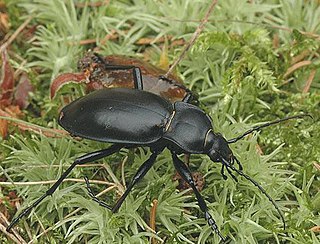
Carabus is a genus of beetles in family Carabidae. The genus is highly diverse with 91 subgenera and more than 1000 recognised species, thus is the largest genus in the subfamily Carabinae. The vast majority are native to the Palearctic, but 11 Nearctic species are also known. Carabus spp. are 12–50 mm (0.47–1.97 in) long, and most species are wingless and often very colourful. These are nocturnal, predatory beetles that feed on snails, earthworms, and caterpillars.

Tetrops is a small genus of longhorn beetles found in Eurasia. One species, Tetrops praeustus, has recently been introduced in Eastern North America.
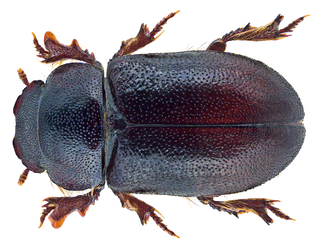
Cheirodes is a genus of darkling beetles in the Melanimini tribe. It was formerly known as Anemia until 1973, when T. J. Spilman determined Anemia to be a synonym of CheirodesGéné, 1839.

Notiophilus is a genus of ground beetle native to the Palearctic, the Nearctic, the Near East and North Africa. It contains the following 57 species:

Cymindis is a genus of ground beetle native to the Palearctic, the Near East, and North Africa. It contains the following species:

Alexiidae is a family of beetles, in the suborder Polyphaga, formerly included within the family Cerylonidae. Alexiidae are very small, almost half spherical beetles with clubbed antennae. They are fungivores found in leaf litter or decaying wood. The family contains the single genus Sphaerosoma with the following species:
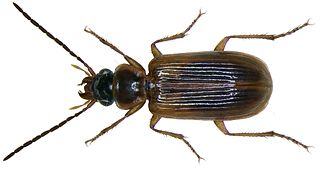
Anthracus is a genus of beetles in the family Carabidae, containing the following species:
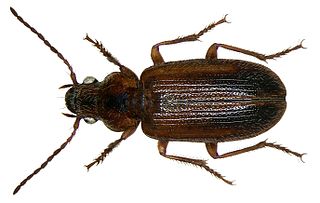
Dicheirotrichus is a genus of beetles in the family Carabidae, containing the following species:
Parophonus is a genus of beetles in the family Carabidae, containing the following species:

Thorictus is a genus of beetles in the family Dermestidae, containing the following species:
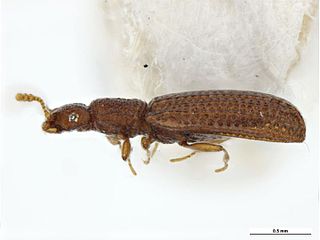
Dienerella is a genus of beetles in the family Latridiidae, containing the following species:

Monotomidae is a family of beetles in the suborder Polyphaga, containing the following genera:
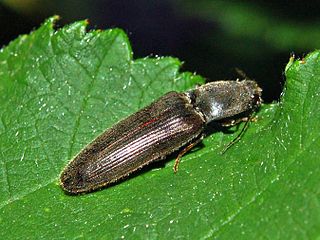
Athous is a genus of click beetles belonging to the family Elateridae

Hemicrepidius is a genus of click beetle belonging to the family Elateridae.

Eodorcadion is a genus of longhorn beetles of the subfamily Lamiinae, containing the following species:
Mesagroicus is a genus of broad-nosed weevils in the beetle family Curculionidae. There are at least 40 described species in Mesagroicus.
Trichiorhyssemus is a genus of aphodiine dung beetles in the family Scarabaeidae. There are more than 20 described species in Trichiorhyssemus.
Aphilenia is a genus of leaf beetles in the subfamily Eumolpinae. It is distributed in Central and East Asia as well as southern Russia. Members of the genus are adapted to dry climates, and feed on bushes of the genus Calligonum. In 2012, the genus was moved from the tribe Bromiini to the tribe Nodinini.
References
- ↑ BioLib.cz - Tetrops hauseri. Retrieved on 8 September 2014.